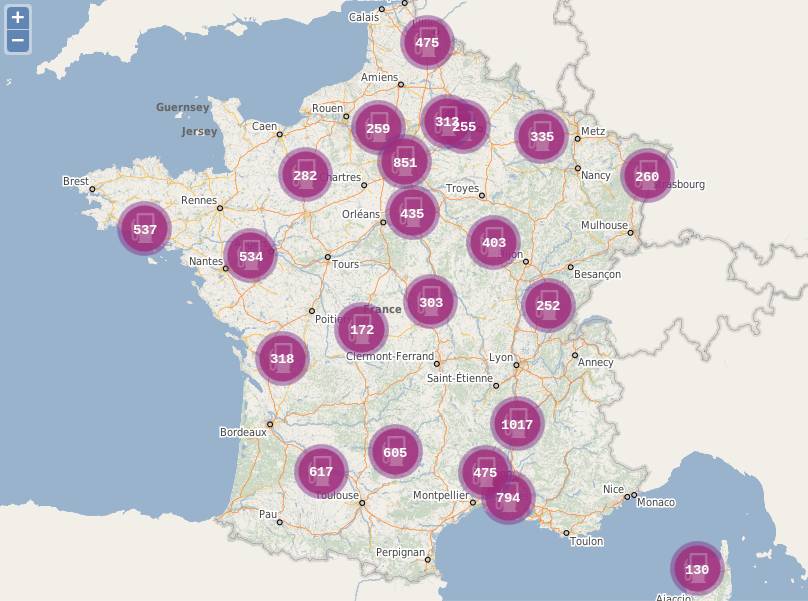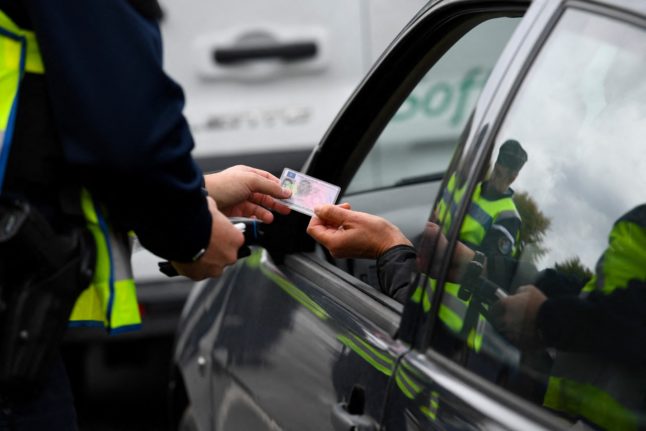On Tuesday, workers at the TotalEnergies refinery in the Seine-Maritime département (Gonfreville-l’Orcher) voted to end their strike, which had been ongoing since March 7th, according to France Bleu Normandie.
Shipments and transfers began again on Tuesday morning, but “the resumption of production may take a few days,” the TotalEnergies management spokersperson told France Bleu Normandie.
The site is responsible for 22 percent of the country’s oil refining capacity, according to French daily Libération.
Despite workers at the Gonfreville-l’Orcher refinery going back to work, fuel shortages were still pronounced in certain parts of the country – such as the Paris region – while other regions had already begun to see improvements.
Olivier Gantois, the head of the oil and gas union, Ufip, told France Bleu that “We started the week badly, but I think that the situation will improve significantly [in the coming days]”.
Strike action has also continued at some refineries – though in smaller and more sporadic form – and technical problems have caused delays at two oil refineries with regard to shipments and production, while another, the Fos-sur-Mer refinery, also near Marseille, still had issues with the crude oil supply, meaning shipments were still disrupted.
Nevertheless, as of Tuesday, several workers had voted to resume work. Near Le Havre, workers at the Port-Jérôme-Gravenchon refinery voted to end their strike action on Thursday and shipments of fuel have resumed.
The Lavera refinery near Marseille had resumed shipments on Tuesday and production was expected to begin starting up again, and at the Feyzon (located in the Rhône département) refinery, production and deliveries were back online.
As of Tuesday, about 9.7 percent of the country’s fuel stations were short at least one type of fuel, and 25 of France’s 96 mainland départements had at least 10 percent of their stations experiencing some level of shortage.
In recent days, the Paris region has been most impacted when compared with other parts of France. In the city of Paris, 44.9 percent of filling stations were missing at least one type of fuel, and in Val-de-Marne, just outside Paris, that figure rose to 61.4 percent, with 8.4 percent of stations running completely dry.
The centre-west of the country was also affected, namely the Indre-et-Loire département where 41.8 percent of stations were experiencing some level of shortage.
Other parts of France, such as the south-west and north-east have been less impacted by fuel shortages, and some départements in those regions were not experiencing any shortages as of Tuesday.
Shortages have been mostly concentrated around SP-95 fuel.
The French government has created an interactive map showing the price of fuel at filling stations around France, which can also be used to see which stations are reporting shortages.
The map allows you to search by town, département or postcode for the nearest filling stations to you – you can find the interactive version here.




 Please whitelist us to continue reading.
Please whitelist us to continue reading.
The Local comes in many languages, so I suppose one should be sympathetic to maladroit English usage. ‘Impact’ is not a substitute for affect or effect. It is not proper English and makes the sentence almost meaningless and repetitive. ‘Impact’ should be reserved for exceptional or catastrophic events or crashes; effects seldom are that serious. The strikes are not (in France) exceptional, nor are the effects catastrophic – yet.
Impact, used where effect is more appropriate is now very common, and largely due to poor education and confusion over knowing how to use ‘affect’ and ‘effect’, or, I’m sad to say journalists seeking sensationalism.
For a useful explanation why not consult the American dictionary https://www.merriam-webster.com/words-at-play/affect-vs-effect-usage-difference where they say
“What to Know:- Affect is usually a verb meaning “to produce an effect upon,” as in “the weather affected his mood.” Effect is usually a noun meaning “a change that results when something is done or happens,” as in “computers have had a huge effect on our lives.” There are exceptions, but if you think of affect as a verb and effect as a noun, you’ll be right most of the time.